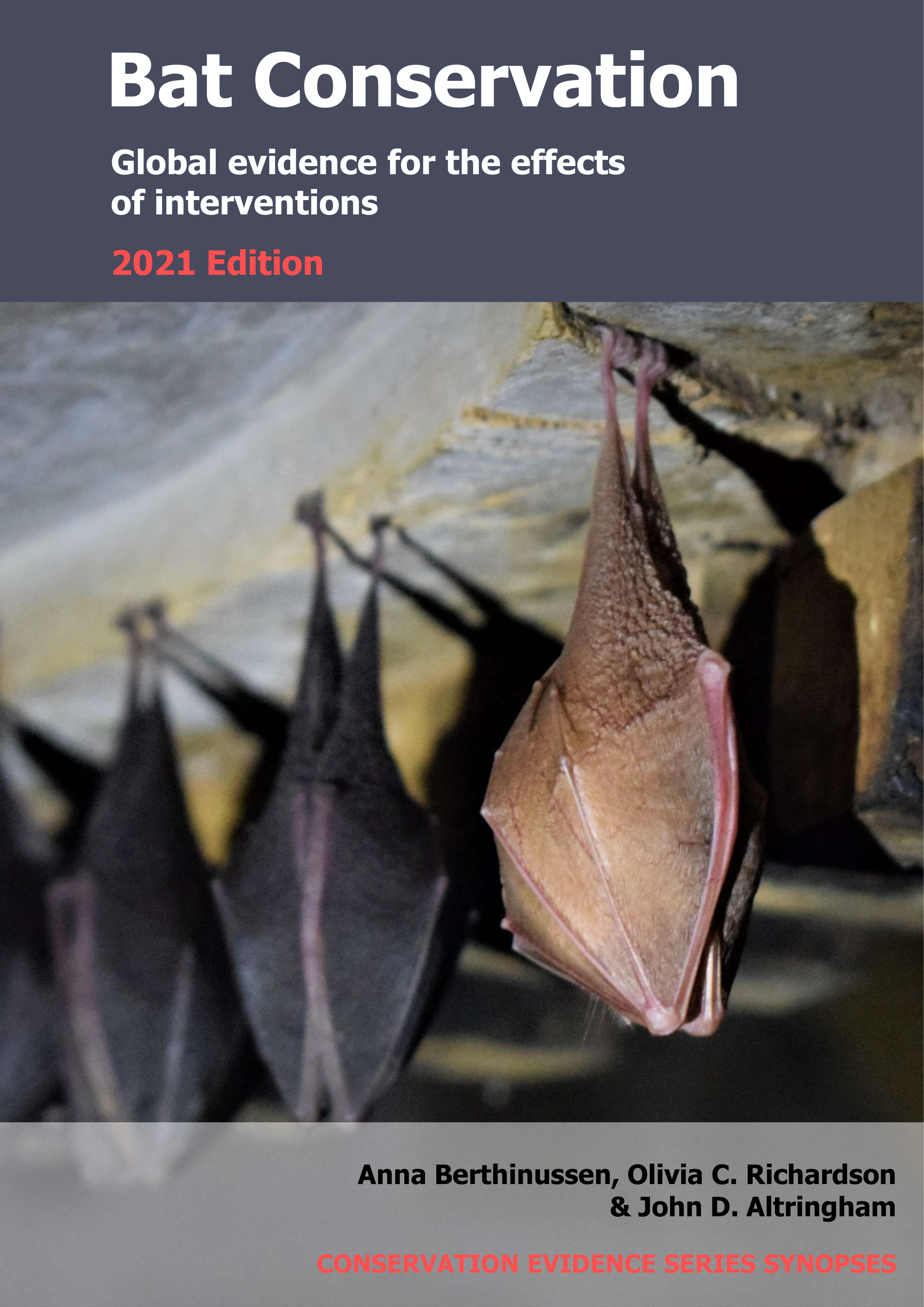Plant field margins with a diverse mix of plant species
-
Overall effectiveness category Unknown effectiveness (limited evidence)
-
Number of studies: 1
View assessment score
Hide assessment score
How is the evidence assessed?
-
Effectiveness
50% -
Certainty
30% -
Harms
0%
Study locations
Supporting evidence from individual studies
A replicated, site comparison study in 2017 on 15 farms in south west England, UK (McHugh et al 2019) found that field margins planted with a greater diversity of plant species were associated with higher activity of two of three bat species but there was no effect on bat occurrence. Activity of soprano pipistrelles Pipistrellus pygmaeus and barbastelle bats Barbastella barbastellus increased with plant diversity within field margins, but there was no effect on the occurrence of either species (data reported as statistical model results). There was no effect on the activity or occurrence of common pipistrelles Pipistrellus pipistrellus, nor on the occurrence of three other bat species or species groups (serotine bats Eptesicus serotinus, noctule bats Nyctalus noctula, Myotis spp.). Dicot cover and flowering plant abundance had positive effects on bat activity and occurrence (see original paper for details). Four types of field margins were surveyed on agri-environment scheme farms: grass margins (14 farms), wildflower margins (eight farms), wild bird seed plots (15 farms), pollen and nectar plots (11 farms). Each of the 48 field margins was surveyed with bat detectors for three consecutive nights on three occasions in April–September 2017.
Study and other actions tested
Where has this evidence come from?
List of journals searched by synopsis
All the journals searched for all synopses
This Action forms part of the Action Synopsis:
Bat Conservation
Bat Conservation - Published 2021
Update 2020





)_2023.JPG)














